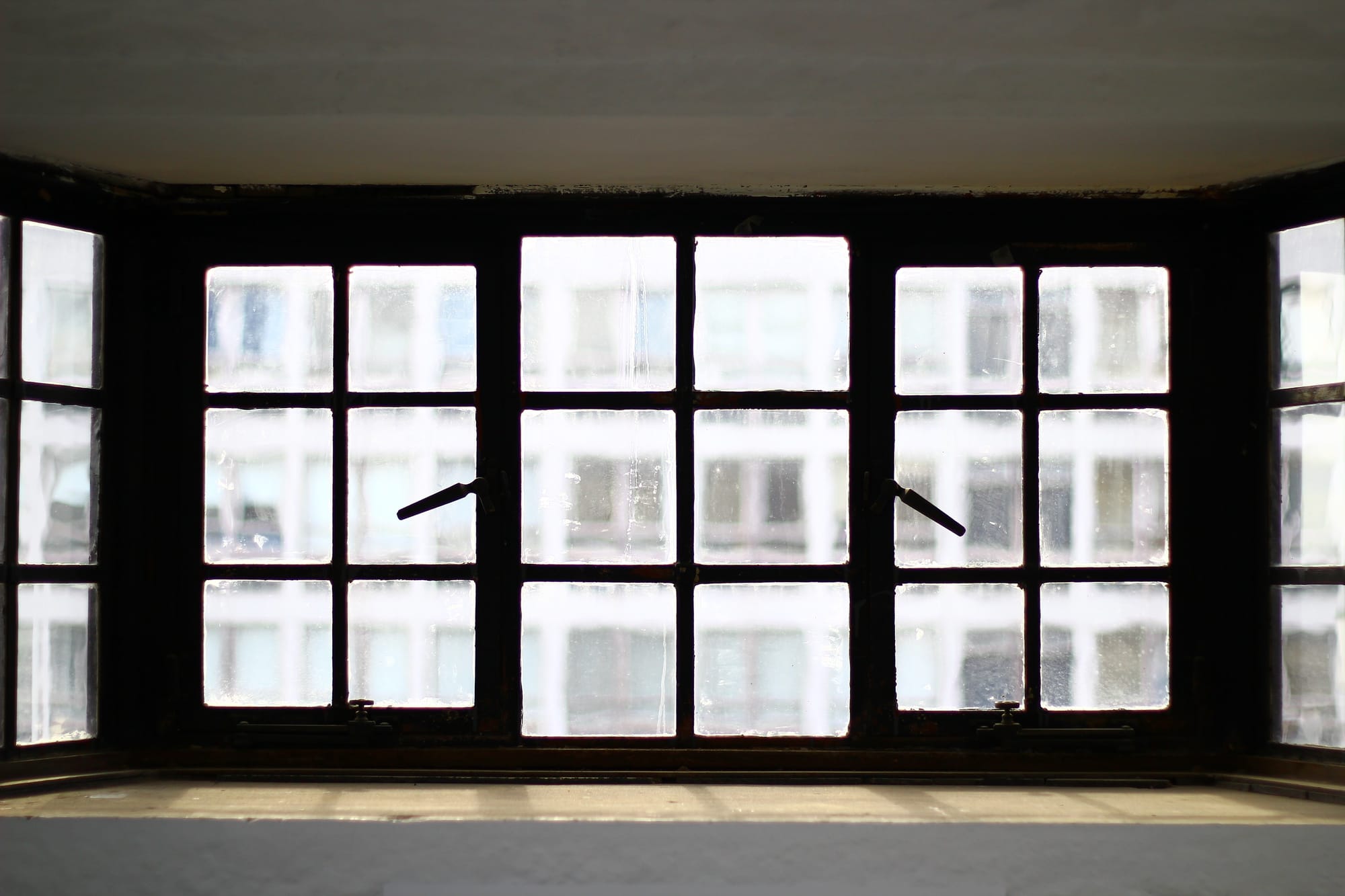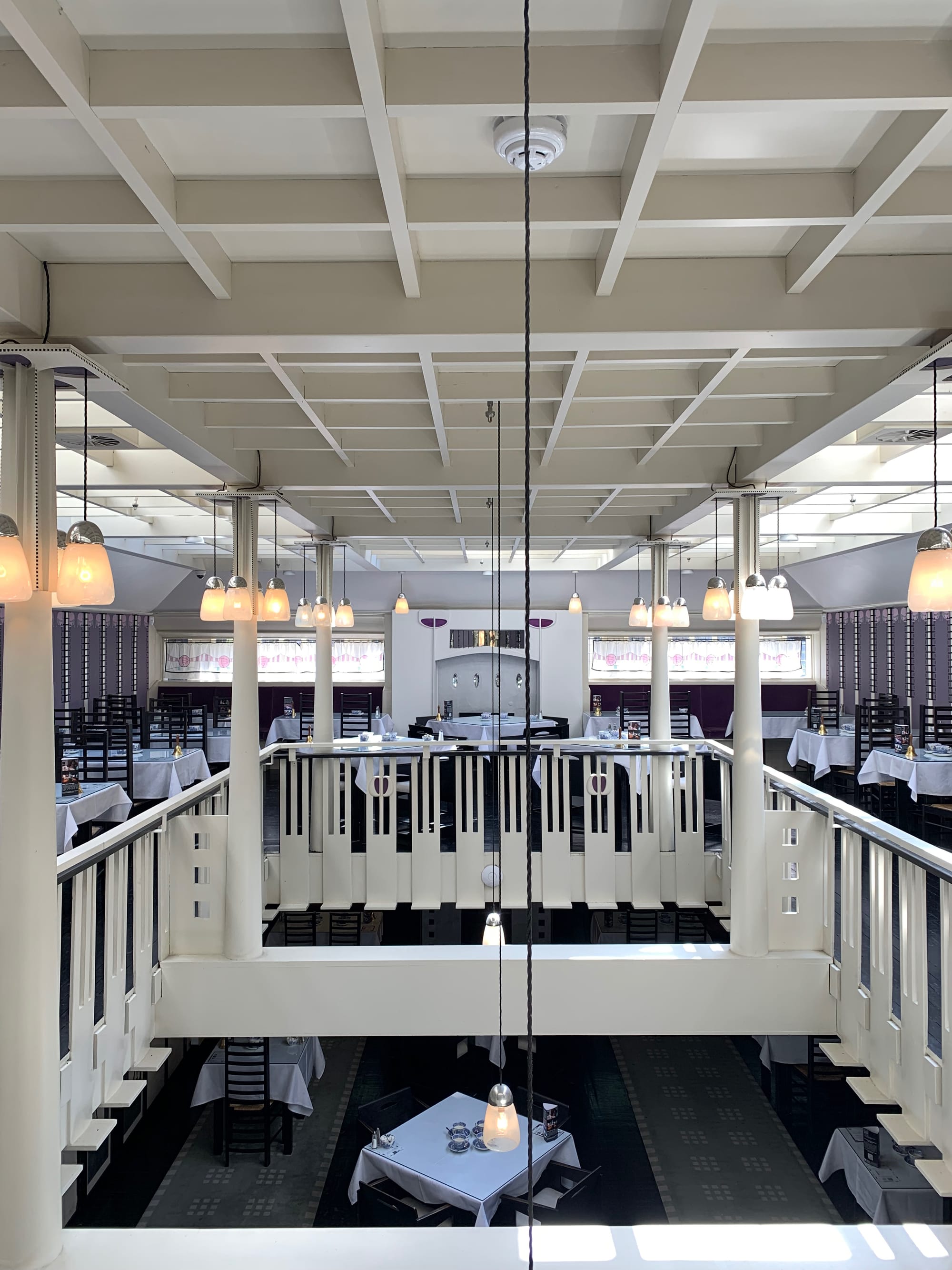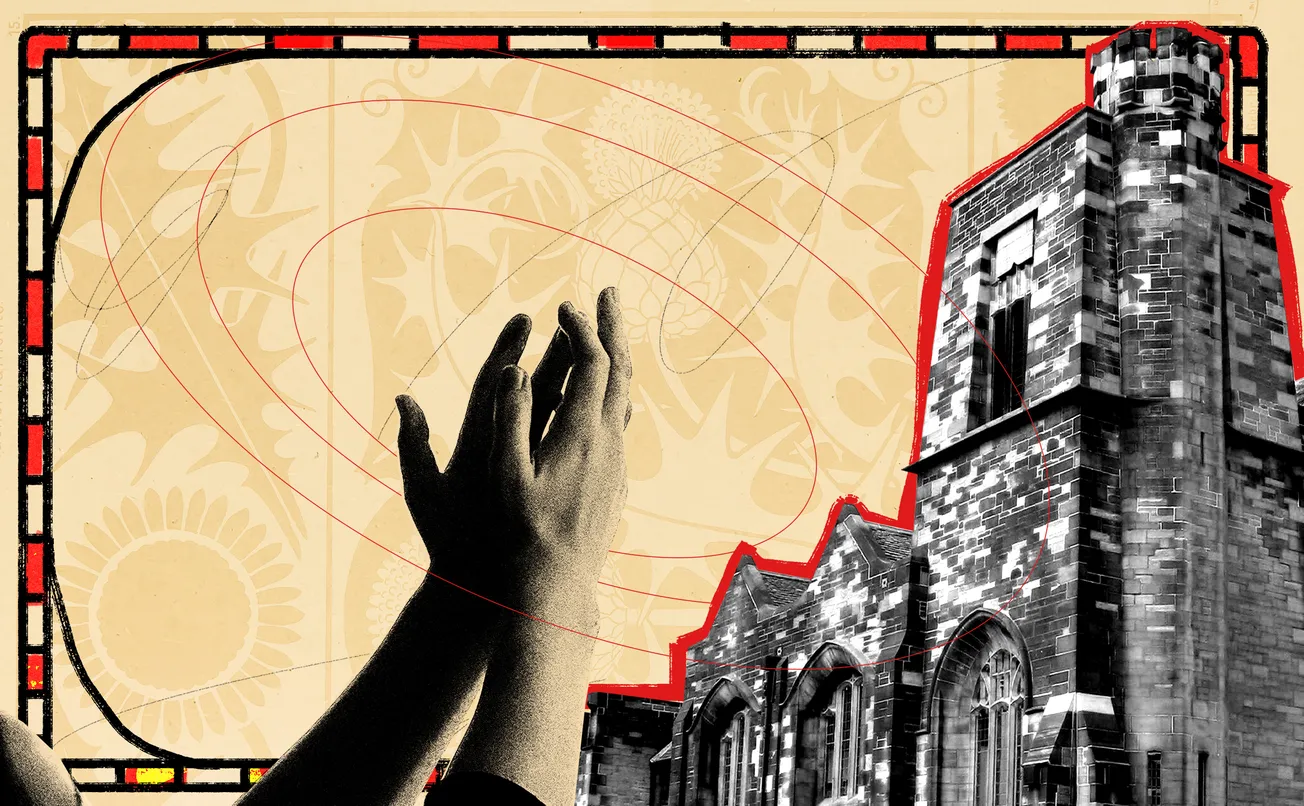Dear readers — we’ve got Mackintosh on the mind at the moment. We’re not sure if it was the pews stooshie, the recent sale of his silverware and a watercolour at auction, or the talks of the Lighthouse reopening as a climate tech hub (editor's note: or the fact Mackintosh is omnipresent in Glasgow).
Either way, we’ve been debating the approach to his architectural legacy in the office, and safe to say we don’t see entirely eye to eye. What better to do then, than take the tête-à-tête to you to have the final say. To boil the debate down reductively, does Glasgow need to park the Mackintosh myth in order to foster the next generation of talent and let them flourish? Or is his lionisation the necessary response to the city having butchered the conservation of so many of his buildings? Moya and I have it out in today's edition.
'Mackintosh ought to be to Glasgow what Gaudí is to Barcelona — we need to double down on preserving his legacy'
By Robbie ArmstrongI have a confession to make. For more of my life than I’d like to admit, I took Charles Rennie Mackintosh for granted (let’s not get started on his collaborator, muse and wife, Margaret Macdonald Mackintosh, of whom her husband once said, “Margaret has genius, I have only talent”). I can’t even remember the first time I consciously took note of a Mackintosh building or design; he’s always been there. CRM looms so large in the cultural imagination, in fact, that he feels permanent and essential. Yet his buildings (and indeed furnishings) are far from fixed entities, vulnerable as they are to motorways, infernos and poor planning decisions.

By my early 20s, I’d begun to take an active interest in the art and architecture of Macdonald and Mackintosh. I vividly remember visiting the School of Art for the first time in 2013. As singular as the building was, what struck me was the commanding interplay of stone, timber, glass, iron and light — the last element every bit as essential as those preceding it. I was awestruck by the 'hen run', the purifying feel of standing in the glazed passageway, bathed in its dazzling luminosity. The Mack, an explosion of creative genius yet functional down to every detail, somehow felt more modern than most buildings half its age. I was spellbound.
Only a few photos survive from my visit, mainly pieces from the degree show rather than Mackintosh’s masterwork. It is painful to unearth them from my archive after so many years. Why hadn’t I documented more of the building? Why didn’t I venture into the library? Why hadn’t I spent the whole day there, imbued in its spell?
A year earlier, I’d taken a friend visiting Glasgow to Mackintosh House — a building I’d walked past obliviously on a daily basis for several years — where we were both stunned into silence by the juxtaposition of the somewhat harsh, Brutalist exterior and its ethereal interior. That the outside was so at odds with the re-created house inside, I’d learn, was the result of the university demolishing the Mackintoshes’ home in Hillhead. What remained inside was saved by Andrew Maclaren Young, the man who’d organised the 1968 Mackintosh centenary exhibition.
As well as the exhibition, Murray Grigor’s Mackintosh film was released in the same year, and the Friends of ‘Toshie group was soon formed. The Charles Rennie Mackintosh Society would be created a few years later in 1973 — only a year after construction was halted on plans for the inner ring road, which had threatened several of the architect’s few buildings. It’s not quite accurate to call this period the Mackintosh ‘revival’, since the artist was hardly celebrated in Glasgow in the first place. Mackintosh occupies the odd position of having first been ostracised in his home city — practically cast away by the establishment, before being posthumously venerated to a hagiographic degree, but only long after his death.
In spite of his semi-mythical status, the stewardship of his clutch of buildings — largely built in an explosive burst of only a dozen or so years — has been sorely mishandled. In short, Glasgow also took Mackintosh for granted for far too long.
In my architecturally enlightened era, I took the opportunity to visit Scotland Street School several times, as aghast by the road network the city had built around it as I was enamoured of its charm. It is currently closed for renovations. I took friends and visitors to The Lighthouse, spinning up the helical staircase to gaze over the cityscape. It closed in 2020, its future undecided — it now seems unthinkable that Glasgow could be crowned UK City of Architecture again, as it was in 1999. I’ve seen Rachel Sermanni, Fergus McCreadie and the John Martyn Project perform at Queen’s Cross Church (safeish in the hands of the Mackintosh Society). I’ve taken a BBC presenter to Mackintosh at the Willow to extoll the myth over tea and cake. At Hill House, I had more of a spiritual experience than I have in any church or temple.
My first and perhaps last visit to the Mack existed in a halcyon era, if only I’d known it at the time. The gains therein were not won by accident; it took decades of campaigning and conservation to ensure Mackintosh’s buildings were accessible and open to the public — functional wherever possible, not simply cast in aspic — not to mention safe from the bulldozer and the postwar planner’s vision.
Since 2014, too many Mackintosh buildings have become increasingly beleaguered, his built heritage embattled, and the Art School’s reconstruction delayed by disputation. These precious few buildings are not only hugely important to how Glasgow understands and defines itself, they are also emblematic of the way in which the city once blended an international outlook with its homegrown industrial heritage, local craftspeople and artists. They are key to the city attracting tourists, and for allowing designers, students, scholars and architects to dream. At once majestically modern and rooted in Scottish vernacular, his buildings help us better understand where we’ve come from and to boldly imagine new futures. Like all architecture, his work exists on a continuum, even as it breaks free from its constraints.
Mackintosh ought to be to Glasgow what Gaudí is to Barcelona. He is far from it, his heritage abandoned when times are tough, packaged into so many Mockintosh tea towels and mugs when the going is good. What does it say that Macdonald and Mackintosh’s work was once revered in Vienna, Turin and Budapest, that his furniture is displayed in Paris’s Musée d’Orsay, that he is so fetishised in Japan and celebrated in New York — but that here in Glasgow the official Mackintosh trail sidesteps his greatest architectural works, lest visitors see how we have squandered his legacy?
If we can’t protect the legacy of our most famous architect, what hope is there for the next generation, let alone Alexander ‘Greek’ Thomson, James Salmon, JJ Burnett and James Millar? That the Reid building was built by an American starchitect bodes badly for hopes that the city might once more spawn another homegrown talent to rival Mackintosh’s genius. Mackintosh died from tongue cancer in London in 1928. What ought to have been his apogee was lost to the bottle — disillusioned with architecture and ostracised in his home city. His ashes were scattered in the Mediterranean, where he’d spent his final years painting watercolours. We owe it to him to nurse his legacy back to health — and never take it for granted again.
'The cult of Mackintosh is understandable but it ignores the real lessons of his legacy'
by Moya Lothian-McLean

Listen, I know I’m on the losing side here. I make this argument not to win, but to seed an idea. Maybe it will put down roots, grow into a strapping young intellectual sapling. Or perhaps it will wither and die because I’ve salted the earth too much with my previous bad Glasgow-related opinions. Either way, here I stand before you all, asking you humbly to consider this: maybe we should give all the Charles Rennie Mackintosh stuff a bit of a breather.
I know, I know. Blasphemy. Even worse that this poison should spew forth from the mouth of — whisper it — an English interloper. How dare I pitch up in the Dear Green Place, take a look at the pioneering curvature of Mackintosh’s signature florals, and have the temerity to suggest Glasgow is a bit too dependent on his (increasingly neglected) legacy?
I’m not sure exactly when in Glasgow’s recent history the verdict on Mackintosh went from: ‘best Scottish architect of the 20th century, unappreciated in his lifetime’ to full canonisation. I’m certain the second fire at Glasgow School of Art kicked his sainthood status above and beyond anything previously achieved by a child of the city. It was a loss that drove home just how few operational Mackintosh buildings Glasgow has left to its name. While the Mackintosh-designed Sauchiehall Street tearooms were restored in 2018 (opening to the public just under a month after the GSA burned down), since then access to ‘authentic’ Mackintosh has only got harder for the average person on the street.
The Lighthouse is closed, Queen’s Cross Church is a (wannabe) wedding venue (with a few less pews than it once had), the Martyr’s Schools is closed and so on. Most Mackintosh work is now so precious an odd consensus seems to have emerged that it can only be rendered as a museum — or literal setpiece, like The Mackintosh House at the Hunterian — rather than functional space. Which is a real waste of the man’s gift with light. The usual lack of money is at play, but there’s a curious pattern of paralysis with Glasgow’s historic buildings in general that also affects Mackintosh-designed structures: their significance creates a protective bubble around them, but a lack of cash makes it more akin to a prison. With no municipal funds — and scant private ones — forthcoming to refurbish or renovate, buildings are ring-fenced to rot, declining until it costs less to demolish them — if a fire doesn’t get to them first.
When it comes to Mackintosh in Glasgow, the cult surrounding him has the tinge of regret to it, powered by the knowledge that Mackintosh’s peers didn’t venerate his work as they should have done. Now, properly appraised and valued, such a slight has to be corrected. Via the production of decorative tea towels. I’m being glib, but I do get it; there’s a scarcity to Mackintosh, because his commissions dried up after 1913. Now his work has taken on such incredible cultural significance, every scrap of Mackintosh, from cutlery to iconic spindly font, is fought for.
But this approach doesn’t actually seem effective in keeping Mackintosh alive and also, it crucially eclipses the other creative figures Glasgow could put some of its historic weight behind. Sure, Charles Rennie Mackintosh is to the city what The Beatles are to Liverpool but maybe some others — Thomas Annan, John Baird, Kate Cranston — could carry the burden of the tourist market for a bit. Simultaneously, perhaps the local authority could make more of a push to recognise the next Mackintosh (of Margaret Macdonald)? It’s striking that Glasgow’s publicly-funded art and design projects, like Gables End or the George Square rehaul, often appear to be playing it so extremely safe — the anti-Mackintosh spirit. (I also have to wonder — does a laser-focus on Mackintosh’s particular brand of genius mean Glasgow is missing out on being able to clock his contemporary counterpart?)
My pitch is not about sidelining Mackintosh or downplaying his contributions to both Glasgow and art traditions the world over. Rather, give him a break. Put the spotlight on Glasgow’s many, many alternative names, past and present, worthy of celebrating. It might just help preserve Mackintosh’s real legacy — of dreaming beyond convention — for generations to come.
Comments
How to comment:
If you are already a member,
click here to sign in
and leave a comment.
If you aren't a member,
sign up here
to be able to leave a comment.
To add your photo, click here to create a profile on Gravatar.






